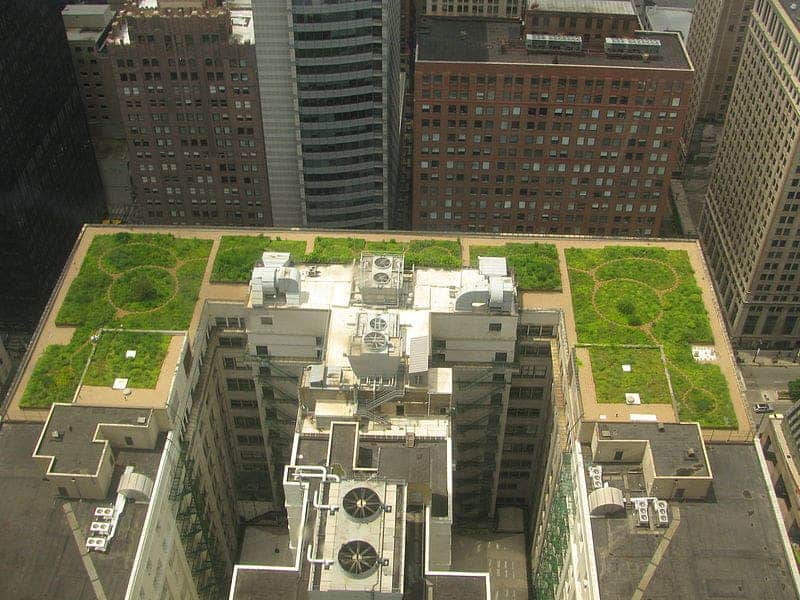As the world struggles to cope with ever-more-common heatwaves, people living in cities are suffering the most due to the Urban Heat Island effect.
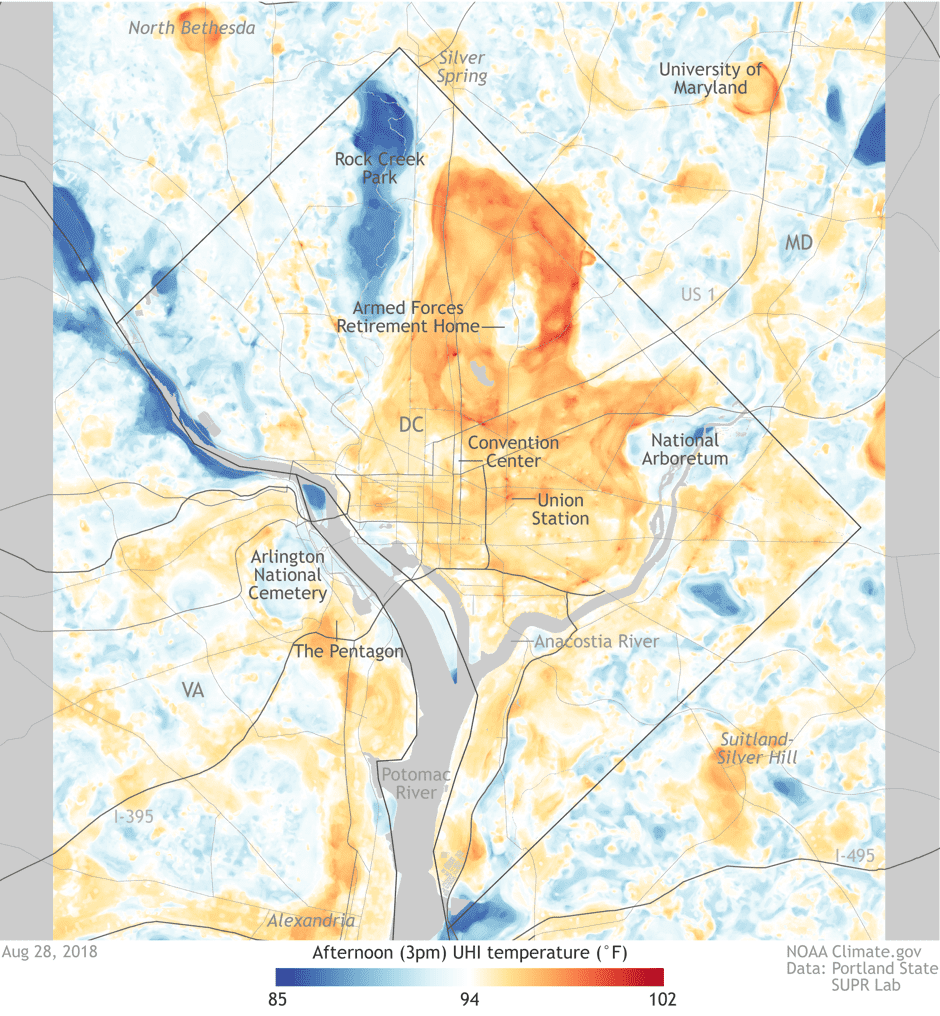
The urban heat island is a phenomenon that affects over 1 billion people worldwide. There are several reasons for this effect — it’s mainly owed to land modification. Dark surfaces absorb more heat from the sun, and concrete and asphalt (think roads and buildings) are excellent heat magnets. Not only do these surfaces attract more heat, but they also capture it for a longer time. Paved surfaces also mean that plants and trees can’t breathe properly, and reduced evapotranspiration contributes to the issue. The overall lower number of trees affects urban areas in more than one way, as cities lose not only the evaporative effect but also the shade.
Pollution and remnant heat from energy production are also important causes.
Cities are hotter than their surroundings. We feel this intuitively when we go to the countryside, and we also know it scientifically. But these maps help put in perspective just how much hotter cities can get. At times, Washington can get 17 degrees hotter than the spots just outside of it. The hottest areas are in the northern residential and commercial areas, with the only the Armed Forces Retirement Home serving as a cool oasis.
Elsewhere, in Baltimore, a similar heat island emerged, but with a different configuration: the hottest area is downtown (as is the case for many cities).

Urban heat islands can be represented in different ways, but they always tell the same story. Urbanization doesn’t just transform (or eliminate) ecosystems, it also alters fundamental parameters of weather and climate. Surface temperature, evaporation, and the overall energy balance lie at the very core of every natural system, and the changes we are producing generate cascading effects. For instance, the urban heat island affects not only the city but also its surroundings by changing how much it rains in the vicinity.
Wind patterns, fog formation, and humidity are also affected by urban heat islands.
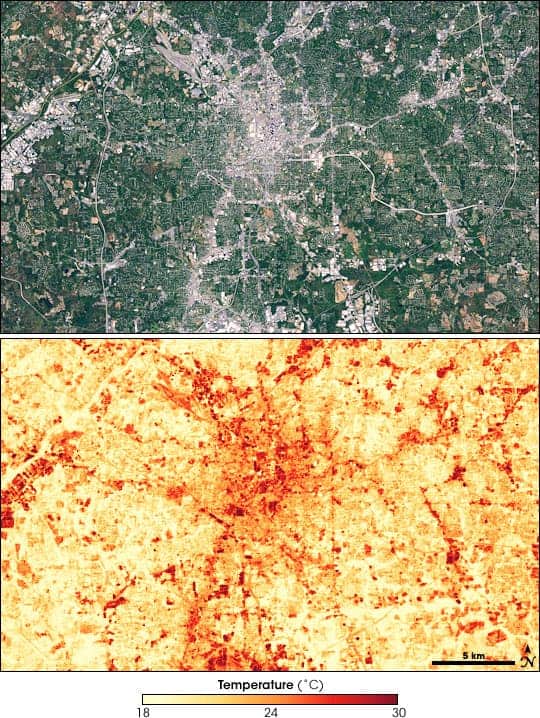
This is also not a new phenomenon. The pair of images above depict Atlanta on September 28, 2000 — almost two decades ago. The bottom image is a land surface map showing the heat temperature differences, painting a striking difference. Where development is densest, the land surface temperature increases.
However, as global warming comes into power, heatwaves are becoming more and more common, and overall, temperatures are rising steadily. This means that baring cities’ scorching temperatures during the summer is becoming more and more difficult.
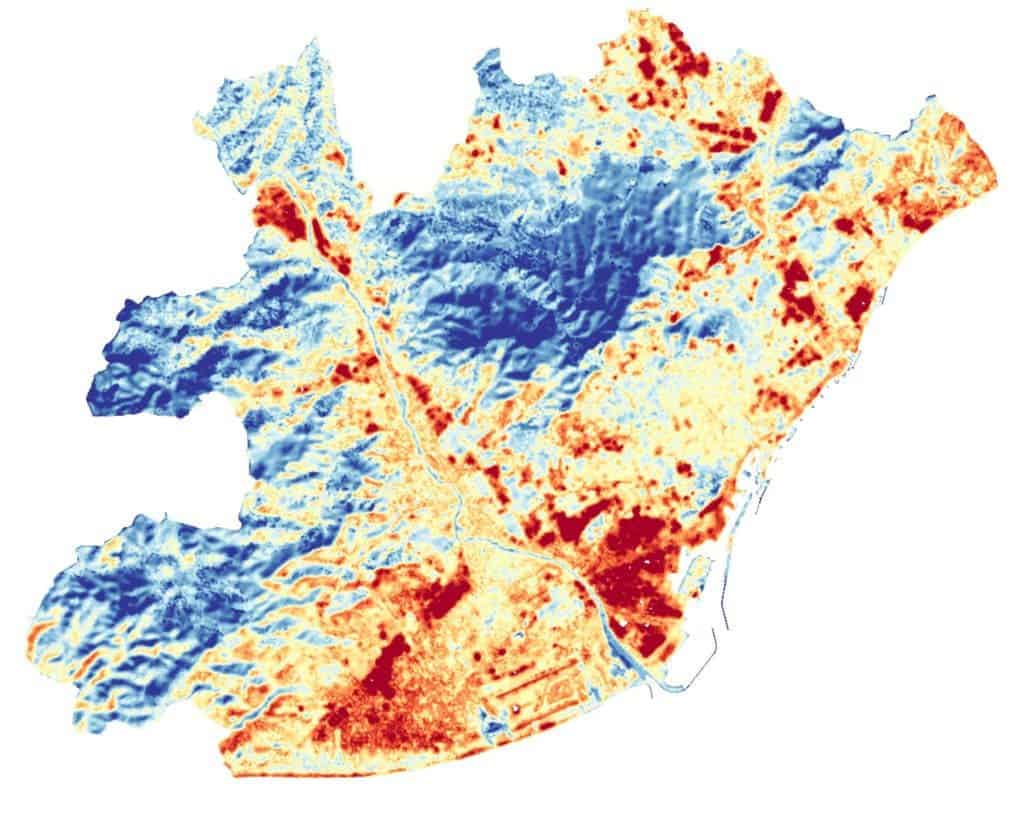
Ideally, city planners and policymakers would use this data to make sure that cities are more resilient to the threat of climate change and develop more suitable infrastructure. Over a third of the temperature increase is due to the prevalence of dark roofs, and most of the remainder is due to dark-colored pavement and the declining of vegetation.
In the long-run, increasing tree canopy cover and implementing new types of pavement can yield excellent results, but using whiter or reflective materials to build houses, roofs, and roads can offer more immediate results. This increases the overall albedo of the city and reduces the urban heat island effect. Another option is to increase the amount of well-watered vegetation. These two options can be combined with the implementation of green roofs.
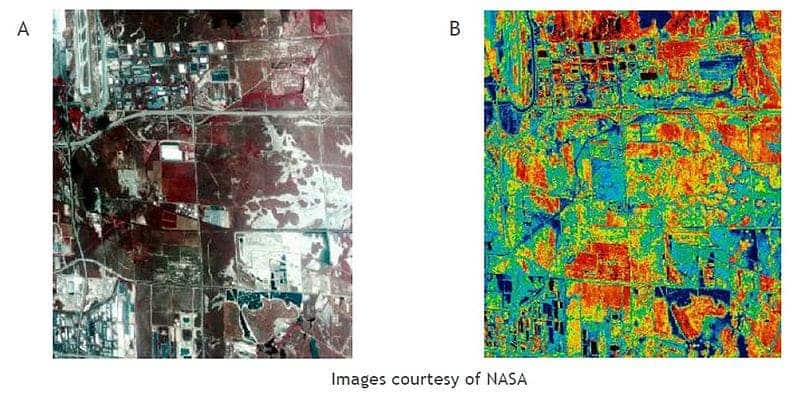
So far, the response has been rather inconsistent in most parts of the world despite the severe effects we are already seeing. Within the United States alone, extreme heat kills over 1,000 people every year, and in Europe, killer heatwaves have become the norm. Other parts of the world, like China, Australia, or Japan, are also not spared.
Needless to say, humans are not the only ones affected by this phenomenon. For urban biodiversity, these increased temperatures can be devastating.
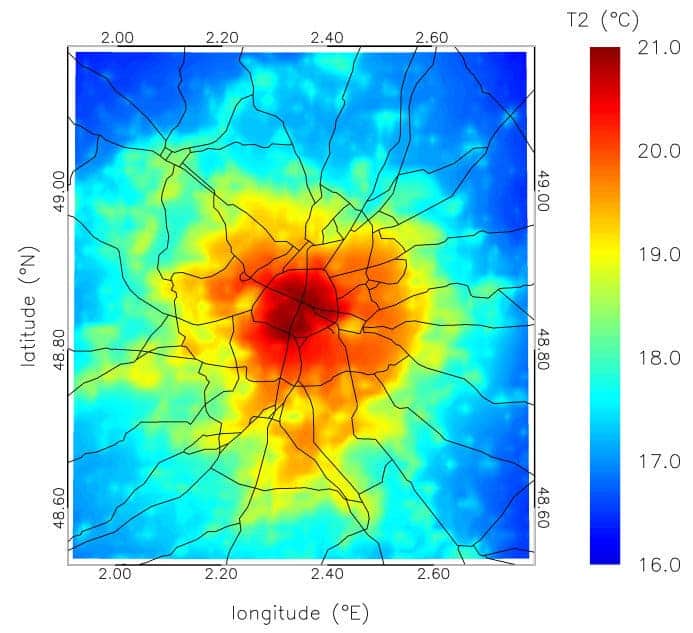
These ‘heat islands’ are particularly noticeable at night. During the day, cities accumulate solar radiation and release the energy after the Sun sets. However, they can still be dangerous during the day.
If you are out in the city, make sure to stay hydrated and avoid being in the sun for too long. Use plenty of sunscreen, a hat, and take advantage of the shade whenever possible. These heat island maps may be pretty — but their effects can be very ugly.
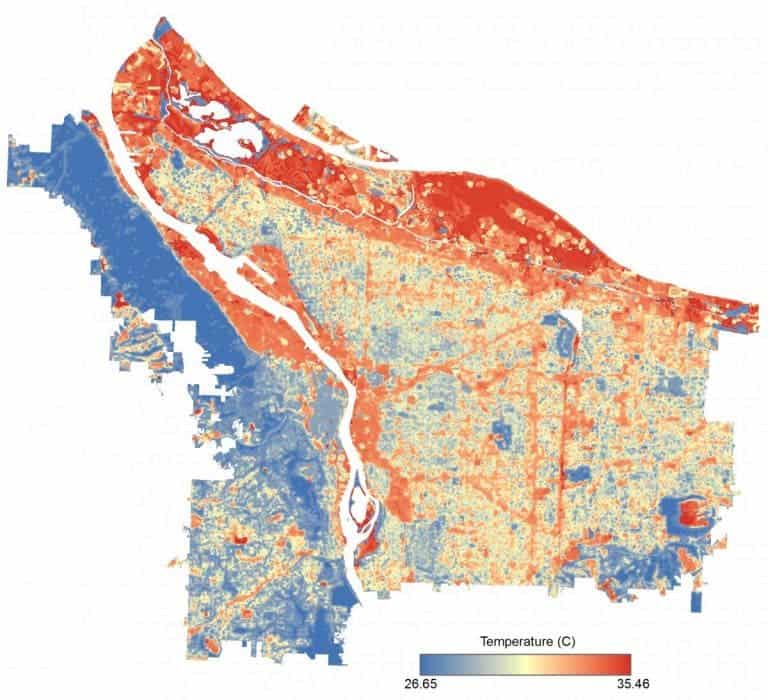
Last but not least, if you are concerned about the heat island effect, or climate change in general, send a message to your elected leaders and policymakers.
We can all make a difference in our day to day life, but without healthy policy, transitioning to a sustainable future becomes exponentially more difficult.
